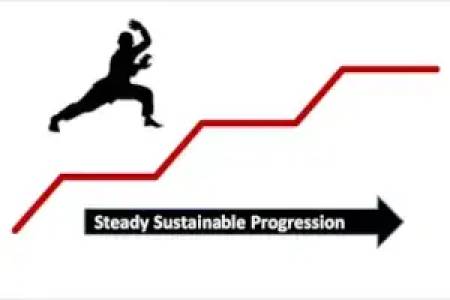Judo is a Japanese Martial Art that is derived from Jūjutsu. This Martial Art utilises throws and takedowns to bring the opponent to the ground. The Judo practitioner or Jūdōka would then aim to subdue or force their opponent into submission.

Disclosure: Some of the links below are affiliate links and at no additional cost to you, I’ll earn a commission. Know that I only recommend products and services I’ve personally used and stand behind. When you use one of my affiliate links, the company compensates me, which helps me run this blog and keep my Martial Arts content free of charge for my readers (like you).
Brief History
The founder of Judo, Kanō Jigorō, was a well-educated man who possessed an excellent academic background. He was subject to wide-spread bullying at school which led him to pursue Jūjutsu. After many years of searching for a Jūjutsu master, Kanō Jigorō was finally successful in training with Fukuda Hachinosuke sensei.
On the passing of Fukuda Hachinosuke, Kanō Jigorō continued his training in other dojos until he founded his own Kudokan, “place for teaching the way”, to disseminate his learnings in the form of Judo through Kata and Randori. Kanō Jigorō had begun to include more techniques that were composed of proven scientific principles and planned on reforming the declining art of Jūjutsu. His vision for Judo, however, was to focus his training on improving the body, mind and character of his students.
Aspects
- Randori – sparring or free practice
- Kata – a set of codified self-defence techniques which are executed in a series of movements
7 Kata are recognised by the Kodokan:
- Randori no Kata – Free Practice forms which comprise of Nage no Kata (Throwing forms) and Katame no Kata (Grappling forms)
- Kime no Kata – Old style self-defence forms
- Kodokan Goshin Justsu – Modern self-defence forms
- Ju no Kata – Forms of “gentleness”
- Itsutsu no Kata – The five forms
- Koshiki no Kata - Ancient forms
- Seiryoku Zen'yō Kokumin Taiiku no Kata - Maximum-efficiency national physical education forms
The Martial Art in Practice
The objective of Judo is to throw, unbalance or take the opponent to the ground. Once taken to the ground the opponent can either be subdued through a pin or made to submit by applying a joint-lock or choke.
Like its predecessor Jūjutsu, Judo is meant for close quarter self-defence and applying the energy of stronger and bigger opponents against themselves. This idea is logically explained in the following situational flow between a Judoka and an opponent who is stronger:
- If the stronger opponent applies maximum force to the Judoka, the Judoka will be unsuccessful in resisting the opponents attack, even when applying all his or her strength in opposition to the opponent;
- Instead of opposing the opponent with force, the Judoka would not resist the opponent by withdrawing his or her body and maintaining balance. This would cause the opponent to lean forward resulting a loss of balance.
- The opponent would no longer be capable of exerting force in any other direction due to an unstable foundation. The Judoka would then be in an advantageous position to use the opponent’s instability to execute a throw using the momentum created by the opponent.
Judo consists of throws, pins, takedowns, joint-locks and strikes. The primary techniques of the of the Martial Art can be broadly categorised into:
- Nage-waza – Throwing
- Ne-waza – Groundwork



A defensive technique, known as the “Body Scissors” or Guard is generally employed by the Judoka who finds themselves in a defensive position on the ground. This is done to prevent the opponent above from attacking through strikes and taking full control of the fight.
Over and above these throwing and groundwork techniques, striking does feature in Judo Kata and can only be employed during active self-defence situations.
Concepts
An effective throw in Judo takes place in 4 phases which follow one another in quick succession:
- Kuzukshi – Placing the opponent off-balance
- Tsukuri – having the body in the correct position to optimally execute the throw
- Kake – execution of the throwing technique
- Kime – completion of the throw
Travel for Martial Arts
Is there any way we can improve upon the details of this martial art? Please Contact Us to let us know
More on Martial Arts

3 Ways to Escape the Mount Position in BJJ
Sunday, 10 July 2022 12:16Brazilian Jiu-Jitsu (BJJ) is a grappling Martial Art where the main goal is to acquire a submission by applying pressure on different parts of your opponent’s body. Three of the most common ways to...

Shu Ha Ri - The Process of Mastery
Thursday, 30 September 2021 20:59Shu Ha Ri is a universal principle that can be applied to all disciplines. The principle describes the natural order in which mastery is attained, given that enough effort, time and deliberate...

Making Progress as a Martial Artist
Thursday, 07 October 2021 17:23Martial Arts like any other skill requires a great deal of commitment, time, and patience to succeed and attain proficiency. The more proficient you become, the slower your progress seems to get....
